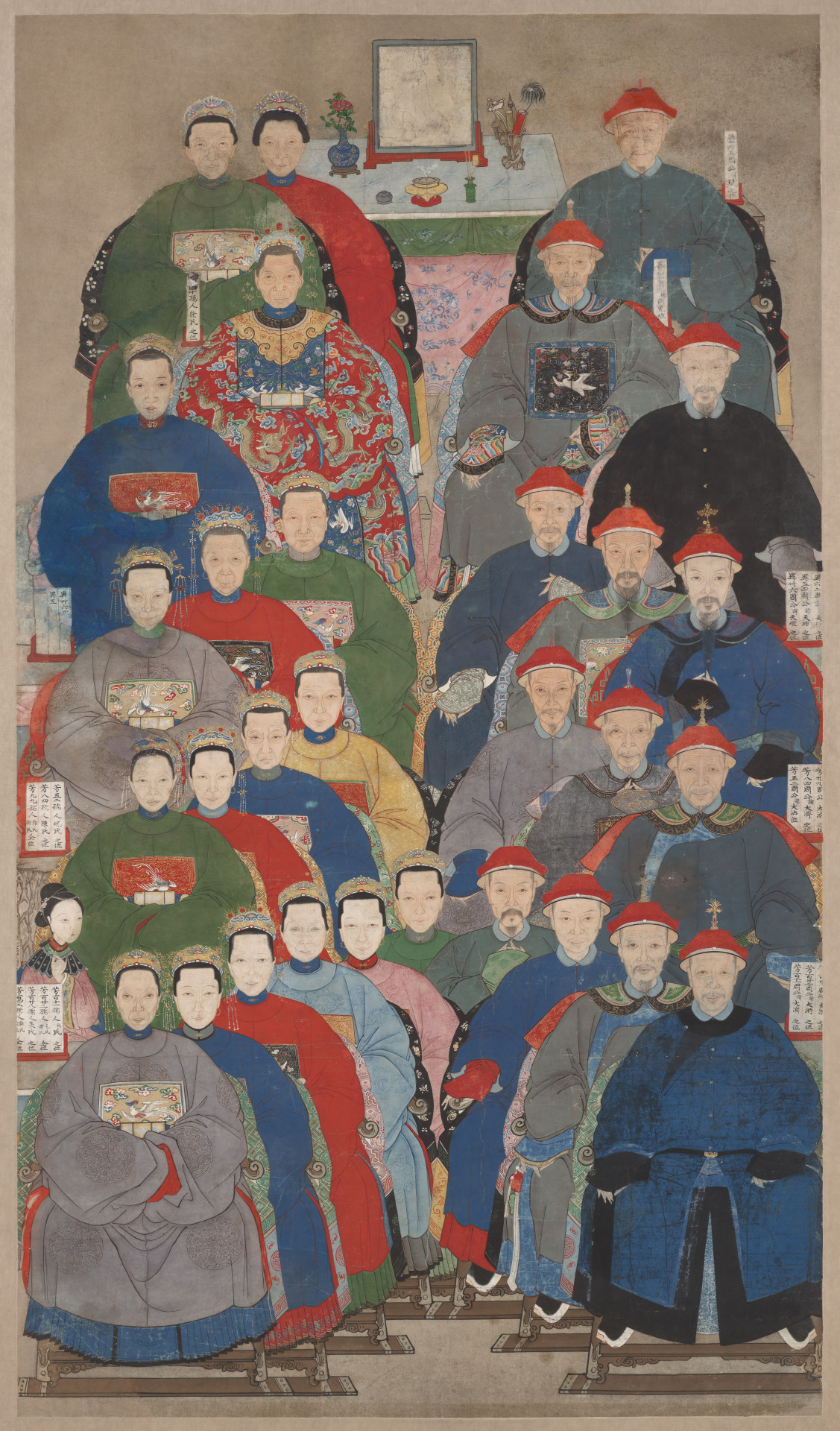
- Magazine Article
- Conservation
Facing the Ancestors
A Chinese painting undergoes conservation

A Chinese ancestor group portrait that was to be sold at a local auction house eventually found its home in the Cleveland Museum of Art’s Chinese painting collection. Thanks to the generosity of its donors, the painting is currently featured in the Clara T. Rankin Galleries of Chinese Art (240A). On view through February 8, 2020, the new installation Facing the Ancestors: Chinese Portrait and Figure Painting celebrates both the gift and the painting’s successful remounting into a Chinese-style hanging scroll. Shortly after its arrival at the museum last year, the artwork underwent treatment in the museum’s June and Simon K. C. Li Center for Chinese Painting Conservation.
In the standard frontal orientation of ancestor portraits, this scroll features six generations and is read from top to bottom, with men on the right and women on the left. Since husbands could have several wives, there are 13 men and 17 women accompanied by a female servant. Inscribed tablets note their rank and relation within the family; the bottom row contains the most recent generation, while the figure on the far right may have commissioned the painting. Square badges on the chests of court robes indicate a sitter’s rank as an official; wives would wear the same badge. Out of reverence, the clan’s descendants probably erased the family name on the scroll before it went on the art market. Scrolls of this type were hung over the home altar for worship during the New Year celebrations.
Previously framed under plexiglass, the painting was in poor condition and mounted in a panel format when it arrived at the museum. Executed with Chinese ink and colors on xuan paper, the work displayed creases, losses through flaking, scratches, foxing, yellowing, and accretions throughout. Inactive white mold was present in the painting’s upper right corner. Additionally, an entire bunch of flowers and the hair ornaments of the two female figures at the upper left were so poorly inpainted that their style did not match the original.

The initial assessment led to the decision to replace the old paper linings and fills and remount the painting in the traditional Chinese hanging scroll format. After the painting’s surface was gently cleaned and washed with warm water using a goat-hair brush, the old paper linings were removed. New linings of soft, thin, toned xuan paper were applied according to traditional Chinese mounting methods.
Numerous samples of the headdress ornaments and the camellia flower, often depicted in Chinese ancestor portraits, were painted on slips of sized paper before applying the best match to an area where the original paper and painting had been lost. Then the painting was spread on a drying board to seamlessly flatten and even out the paper linings and patches.
Retouching and inpainting areas of loss is controversial, and Western and Eastern approaches in conservation differ: the former leaves missing areas largely untouched but in a neutral tone, while the latter keeps painted areas intact and repaints them. The new method applied here is fully reversible and was developed to find a compromise between the two traditions. Senior conservator Pinfang Zhu at the Shanghai Museum was a valuable collaborator for this undertaking.
Cleveland Art, September/October 2019